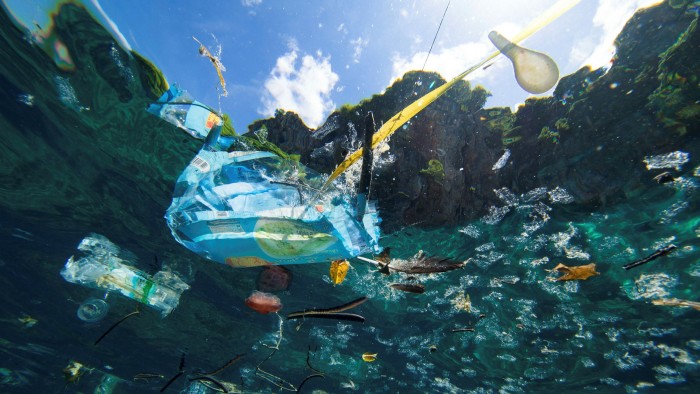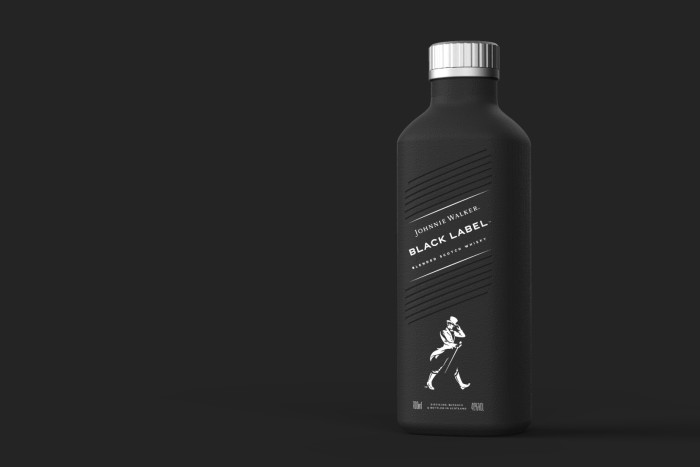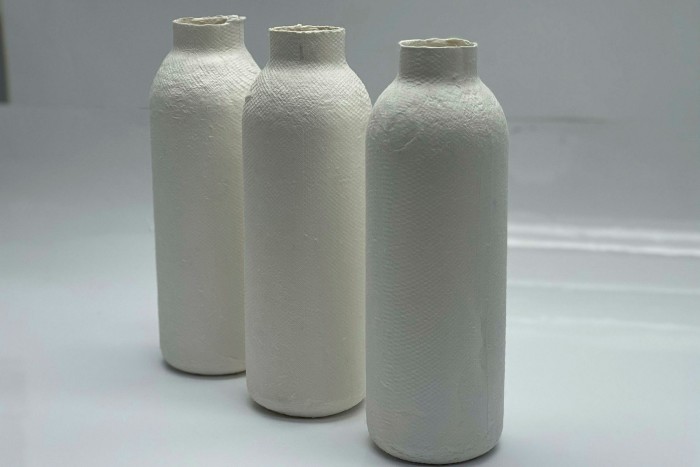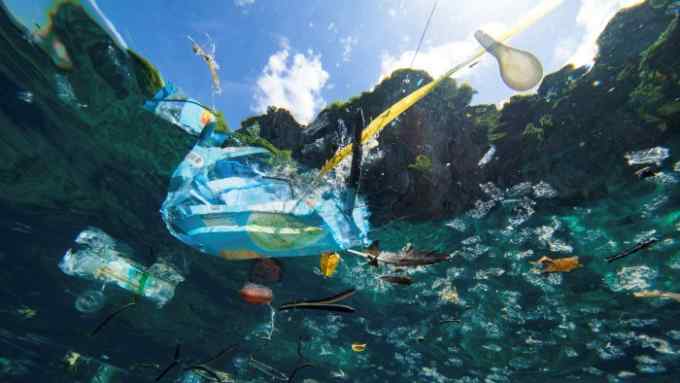Consumer companies develop paper alternatives to plastic packaging

Roula Khalaf, Editor of the FT, selects her favourite stories in this weekly newsletter.
Consumers who grew up with Nestlé’s Smarties confectionery often have fond memories of popping plastic caps off the tubes of sugar-coated chocolate beans.
But Smarties lovers from now on will have a different experience. This year, the world’s largest foodmaker ditched the caps as part of a switch to entirely recyclable paper-based packaging across the Smarties brand — a move intended to help cut the world’s plastic production, in a bid to avoid the use of 400 tons of plastics annually.
“Paper packaging is more environmentally friendly because the paper comes from renewable sources [as opposed to] plastic, which is from fossil resources,” says Bruce Funnell, packaging lead at Nestlé.
Smarties are just one of a growing number of consumer products switching to from plastic to paper packaging, as awareness grows of the emissions impact of plastics made from fossil fuels — as well as the ocean pollution caused by plastic waste.
Unilever announced this month it had created the world’s first paper-based laundry detergent bottle, which will be rolled out next year for its Omo brand — also known as Persil, Skip or Breeze in certain countries.
Similarly, Mars is carrying out a large-scale trial of paper packaging for its Balisto snack bars in Germany, while Diageo has even created a paper Johnnie Walker whisky bottle, to be made available for a small number of its Black Label 70cl products. Paper is lighter than glass, making it easier to transport, and the process of recycling it uses less energy.

But the switch brings technical challenges — especially when used to store liquids or food, as paper and wood pulp are more permeable and less durable than plastic. “While paper is one of the most recycled products, when used alone, it lacks sufficient barrier and functional properties to be used for food,” explains Funnell.
Scientists at Nestlé and other consumer goods and packaging groups are working to create coatings that protect against water vapour, oxygen and other substances, and enable sealing with heat, but still allow the packaging to be easily recycled or composted.
Plastic-coated paper packaging is already widely used but, because of its combination of materials, is difficult to recycle and normally cannot be processed through household recycling streams.
Unilever and Diageo are using technology from Pulpex — a company that has partnered with a consortium of businesses, also including GlaxoSmithKline’s consumer healthcare division, to develop packaging made from moulded and cured wood pulp.
Pulpex estimates that when its technology is used to replace plastic bottles, it results in a carbon footprint that is about 30 per cent lower, and 90 per cent less for glass.
“As recycling rates are higher for paper and card than for plastic in many markets, pulp-based packaging has a higher chance of actually being recycled and becoming more ‘circular’,” says Richard Slater, chief research and development officer at Unilever.
Researchers are working to expand the range of products that can be packaged in wood pulp-based containers. For example, Pulpex is working on a version of its packaging suitable for fizzy drinks, while Unilever says it is working on a plastic-free bottle closing mechanism.

However, this new packaging also requires changes in manufacturing processes, too. Nestlé said it had to adapt production lines to allow for careful handling of paper so that it does not get torn or punctured.
And although these changes are already bringing new, distinctive-looking versions of consumer goods to supermarket shelves, their impact is limited.
Sander Defruyt, who leads the New Plastics Economy initiative at the Ellen Macarthur Foundation, says that while changing materials can help, it is not a comprehensive answer to the dependence of the consumer economy on single-use packaging.
“Material substitution from plastics to paper, or to any other substance, is clearly not the solution,” he says. “It is not addressing some of the fundamental, underlying root causes of this major waste problem we have in our linear waste economy. We need to rethink that model. How can we deliver products to consumers without the need for packaging or with reusable packaging?”
Consumer goods groups have been focused on increasing recycled plastic content in their packaging, and on substitutions — such as the switch to paper. But they have had less success in switching to reusable packaging or refill models, like Pepsi’s SodaStream, the Ellen Macarthur Foundation has found.
If demand for paper for packaging increases sharply, there are also concerns about deforestation, a major factor in climate change which is worsened by the wood pulp industry. “We need to reduce our wood consumption in general, globally — that’s one of the factors to be taken into account,” says Defruyt.
Unilever is committed to a deforestation-free supply chain by the end of 2023, while Nestlé is working towards a similar goal for 2022, having extended it from 2020. But deforestation in key areas such as the Amazon has continued to accelerate.
Consumer goods groups maintain they are looking at other solutions, as well. Unilever, for example, is launching its Dove deodorant in a refillable stainless steel pack, and has scaled up a refill trial with several of its brands in UK retailer Asda. Slater says Unilever continues to “innovate a suite of solutions”, adding: “There is no silver bullet.”
Follow @ftclimate on Instagram
Climate Capital

Where climate change meets business, markets and politics. Explore the FT’s coverage here.
Are you curious about the FT’s environmental sustainability commitments? Find out more about our science-based targets here

Comments